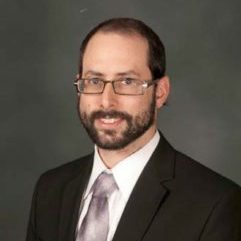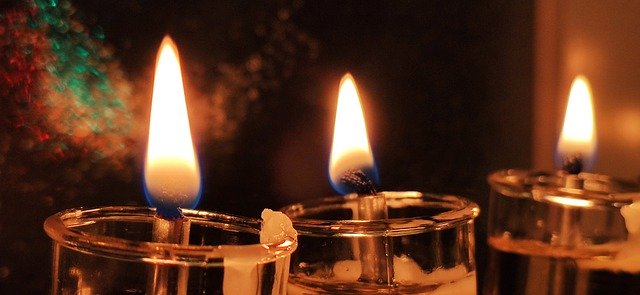The Medrash tells us about a man named Yosef Meshisa. He may have lived at the time of the Roman invasion, but the context of the Medrash makes it sound like he lived at the time of the Greeks. He was what we would call a traitor. He joined the Greeks, adopted their culture, and assisted them in military strategy. When the Greeks invaded the Bais Hamikdash (Temple), they sent him in first. They told him to choose one item that would be his to keep.
Yosef Meshisa entered the Bais Hamikdash and grabbed the Menorah. When he came out it was immediately confiscated by the Greeks.
“This is too pretty”, they said. “It’s too nice for you. A simple man like you cannot own something like this”
The Greeks told Yosef Meshisa to go back into the Bais Hamikdash and choose something else. He refused. They offered to make him a tax collector for three years if he would go back in. He still refused. Finally, they threatened to kill him if he did not re-enter.
Yosef Meshisa reamined defiant. He said, “I angered my G-d once. I will not do it again.” And he was put to death.
What happened to Yosef Meshisa? He couldn’t have been too holy if he was willing to go into the Bais Hamikdash and take the Menorah. What caused him to repent?
The Ponevizher Rav explains that the very space of the Bais Hamikdash had the power to change a person. Yosef Meshisa was a different man because he had spent time in the Bais Hamikdash. This is an awesome thought, but still does not totally answer the question. If he repented inside the Bais Hamikdash, why did he come out carrying the Menorah?
Perhaps it was his conversation with the Greeks that put him over the edge. Yosef went into the Bais Hamikdash and was, perhaps unexpectedly, overwhelmed by its holiness. He was drawn to the Menorah and all that it embodied and represented. This Menorah was the focal point of the entire Jewish nation in their service of Hashem. It was constantly lit and represented the light that Hashem asked us to share with the world. The Menorah was holy. Yosef Meshisa grabbed the Menorah because, deep inside, it meant something to him.
When he came outside to his friends, he encountered a culture shock. The Greeks said he couldn’t have the Menorah because it was too beautiful, too fine a work of art and he was too simple to appreciate it. They couldn’t see the spirituality in the Menorah or holiness that it brought. They couldn’t see that it was meaningful to him. All they saw was a beautiful candelabra.
It was at that point that Yosef realized that he had fallen in with the wrong crowd. The Jews weren’t against the beauty, the mathematics, or the art of the Greeks. They were against the attitude that everything in this world is tangible and that an invisible G-d and spirituality have no place.
Yosef Meshisa realized that there was far more the Menorah than what the Greeks were able to recognize. He realized that there was far more to Yosef Meshisa than he himself had been willing to recognize. He had a soul and it was far more important to him than any honor or riches or culture that he had been willing to exchange for it.
One of the edicts of the Greeks was that every Ox horn must be engraved with the statement “we have nothing to do with Hashem”. The Greeks knew what they were doing.
Imagine a Jew walking behind his ox plowing his field or bringing goods to the marketplace. He realizes that as hard as he is working, he is relying on Hashem to make him successful. The Greeks wanted to put a stop to that. They wanted us to spend all day staring at anti-god bumper stickers.
The lesson of Chanukah and of Yosef Meshisa is that there is more to the world than what the Greeks were willing to see. There is a spiritual component and G-d is with us in everything that we do.
Several years ago I joined the Lost Tribe on another one of their motorcycle rides down to Surrey, VA. As I sat enjoying the thrill of sharp turns at 70 mph I felt particular close to the asphalt and knew that we would need to say Tefillas Haderech (the traveler’s prayer). We made a stop in the quaint village of Isle-of-white, parked our bikes and stood in a semi-circle. I explained that we would be asking G-d to keep us safe and healthy and out of harm’s way. The group nodded appreciatively and treated me to a resounding “Amein” when I finished.
Two statements from the riders told me that Tefillas Haderech had been a good idea:
‘If that is how fast all of you services are”, one fellow said, “I’m becoming Orthodox”.
The second fellow was a little more reverent. “So, will G-d be joining us on our ride now?” he wanted to know.
The idea of G-d coming along on our bike ride is still bouncing around in my head. G-d comes along with us, no matter who we are, where we are, or what we are doing. It should be obvious to us, but it sometimes isn’t.
We need to use the days of Chanukah to refocus and connect to the purity that powers our lives and has the ability to give meaning and depth to everything that we do. Whether we are holding the Menorah, leading an ox, sitting behind a desk, or riding a Harley, G-d is with us. He is on our side and an integral part of our lives.


0 Comments